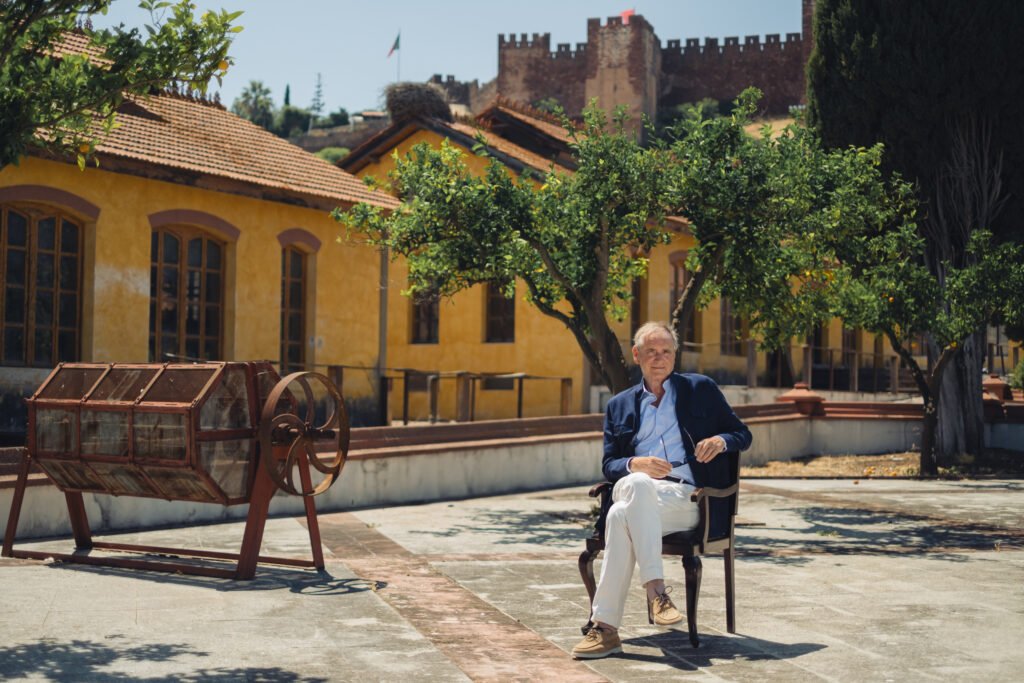Manuel Aires Mateus, one of Portugal’s most acclaimed architects, is known for poetic minimalism
and a deep sensitivity to space, light, and materials. In this exclusive interview, he shares his
vision, inspirations, and how his work bridges history with modernity. Our work is often described as poetic minimalism, where voids and silence play as important a role as physical structures.
How do you perceive the relationship between absence and presence in your designs?
We believe that what we design is a life support, as some things are present but will always leave
room to be completed by life. This idea that we provide a platform that allows a degree of
appropriation of freedom is essential for people to feel good in places. Portugal has a deep architectural heritage, from Manueline to Pombaline styles.
How do you see contemporary architecture conversing with the country’s past, and where does your work fit within this ongoing dialogue?
The past and history are a fundamental influence on architecture. What we do today must also be
anchored in time and in what time has taught us. The history of Portuguese architecture has always
taught us to use resources in a very rational way. This line remains and is permanent. We are interested in the past, we are interested in understanding it, we are interested in following it, and we do not see this temporal discontinuity. For us, there is a certain relationship between all times. Our work is essentially a continuation of that time.
Many of your projects exhibit a profound sensitivity to light. Can you share your thoughts on the role of natural light in shaping architectural experiences and how it influences how people interact with space?
Light is a fundamental condition in architecture. Light reveals to us a primary condition of space.
There is a fundamental condition of space, which is the visible condition. We are very interested in the idea of light and the way it is conducted, the way it is worked, and the way we work the way it is received. Because the way we receive light naturally designs the space.
You often work with materials that feel timeless – stone, concrete, wood. Do you believe architecture should be rooted in permanence, or is there beauty in ephemerality?
Beauty can be found everywhere. However, the work of architecture is for eternity. It is the art of
eternity. It is the art of that which endures, it is the art of that which supports other activities.
Beyond aesthetics, your buildings seem to embody a strong emotional and sensory dimension. Do you
consider architecture a form of storytelling, and if so, what narratives are you most drawn to?
When we work in architecture, we work with two conditions of reality. One is tangible – what we
touch, what we see, the dimension, the materiality. Another condition has to do with the way people
interact and relate to what we are doing. How we reach their memories and their culture is
fundamental. One of the things I like most is working with what we all know, what is a common home,
what unites us all, and which, ultimately, functions as a basis for comfort in any approach.
Portuguese architecture has gained global recognition in recent decades. What makes it so distinctive, and how do you see the future of architecture evolving in Portugal?
Portuguese architecture is made in a country that has traditionally and historically always built
for other places. Therefore, it is a country that has always been accustomed to having a pragmatic
and efficient architecture. I think that this idea of pragmatism and efficiency is now associated with
the idea of using fewer resources, so it is, naturally, an architecture and a desire that is
recognized as a value in today’s world.
I hope that Portuguese architecture evolves, understanding the idea of belonging to a place like
Portugal, like Europe, which ultimately makes historical and cultural roots its most important
point.
Your projects balance bold geometric clarity with a deep respect for landscape and surroundings. How do you approach the challenge of integrating contemporary structures into historic or natural settings?
One of the lessons we also learn from our history is that buildings are made up of the sum of
several layers from different times. When we work in architecture, we should not try to erase the
layers, whether historical or natural, but rather reinforce them in some way. I believe that the
first task of architecture is to highlight what exists, whether it is man-made or natural. By
highlighting them, we are gaining these values for our project.
What spaces, outside of architecture, inspire you the most? Whether a painting, a piece of music, or a natural landscape – what infl uences shape your creative vision in unexpected ways?
The most beautiful thing about architecture is that everything infl uences it, from the smallest details to the biggest questions, from the great movements of the world to an event that can disturb us for a moment. Everything that surrounds us infl uences us – painting, sculpture, literature, and all forms of art. Everything is a possibility for making architecture. Contact with other human
beings is also fundamental. Normally, it is others who infl uence us the most in the development
of a project. But this is a wonderful condition in architecture: that everything can be done from any
approach.
If you could design a space that represents the essence of Portugal – not just visually, but
emotionally and culturally – what would it look like?
I don’t know, but perhaps it will be similar to the Jerónimos Monastery, which is probably the
space that best represents Portuguese history, ambition, and will.
Sustainability in architecture often focuses on technology and efficiency, but your work suggests a different kind of sustainability – one that is deeply human and timeless. How do you define sustainability in your practice?
The first condition for sustainability is that buildings last. On the one hand, this means a physical condition, but on the other hand, it means a condition of adaptability and freedom that allows buildings to last beyond any program with which they were created. It is important to understand that this is a condition and a lesson from Europe, which allows us to imagine that buildings can remain and be adapted.













